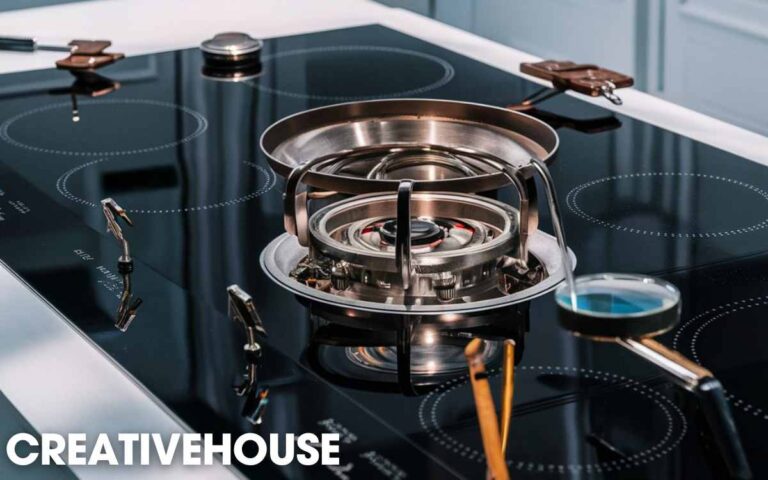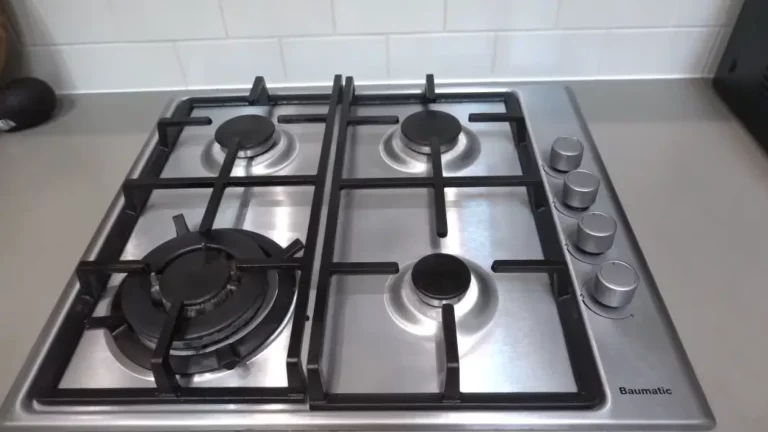If you like to cook, you must have come across the term “simmer” a lot, especially in different cuisine recipes. But do you know what it means?
“Simmer is a slow and gentle cooking technique that involves heating a liquid on an electric or gas stove while keeping the heating temperature at medium to low (around 95°C or 195°F) settings. This method allows the flavors of herbs, spices, and other ingredients to meld and intensify.”
This post will provide you with a thorough grasp of what simmering is, how to get the ideal simmer and some useful tips and tricks to make your cooking experience a success. So, keep reading!
Key Takeaway
What Does Simmer Mean On Stove?
Simmer or Simmering is a cooking technique that uses low heat to cook food slowly and gently.
Many even confuse “Simmering” with “Boiling“. But boiling and simmering are two completely different ways of cooking.
When you simmer the food, it means that you are keeping the heating temperature below the boiling temperature so that the food can cook evenly and retain its shape, texture, and flavor.
This method melds the flavors of the ingredients together and is especially preferred for cooking food items like meat, poultry, and fish, where you can make the dish tender and flavorful.
The exact temperature of simmering may vary depending on the food itself, the thickness of the cooking pot you’re using, and your personal preference.
However, the below temperature preferences are considered as the standard for simmering:
| Level | Temperature Range |
| Low | 82°C – 93°C (180°F – 200°F) |
| Medium-Low | 93°C – 121°C (200°F – 250°F) |
| Medium | 121°C – 149°C (250°F – 300°F) |
There are 3 kinds of Simmering that one can perform:
1. Low or Slow Simmer:
When you use the term “Low” or “slow” Simmering, it means there will be very little (only tiny wisps of bubbles nothing else) to no movement while the food is cooking in the pot. It is more like keeping the dish hot without reducing or moving the liquid.
This technique is used for gently simmering and cooking delicate chicken dishes and pasta sauces, as well as for making braises and stocks.
2. Simmer (Medium or Medium to Low):
This indicates you are either cooking the dish at medium or medium-low heat level.
The heat should reach the level where the ingredients are boiled but not more than that. Otherwise, it will become bitter or ruin the overall taste of the dish.
When you are simmering at medium or medium to low heat, you will soon notice tiny bubbles slowly forming and steadily releasing from the pot’s base.
This is the standard form of simmering, and you can use this technique especially to cook dishes like soups or stews.
3. High or Rapid Simmer:
This level of simmering is considered for dishes that need to be simmered to reduce the liquid level in them to maintain a certain thickness in those dishes.
But at the same time, you need to put the heat level medium-high to high temp in a way so that the cooking item does not burn or stick to the bottom of your pan while simmering.
This is mainly used for making various sauces that you can store for a certain period.
What Does Simmer Mean On Electric Stoves?
Simmering on an electric stove refers to cooking a dish on a low heat setting. It will be the same as simmering on a gas stove.
But it will take longer on an electric stove than a gas stove for heating up and cooling down.
If you are simmering on an electric range or stove, you have to adjust the heat more frequently to maintain a constant simmer.
What Temp Is Simmer on Electric Stoves?
As a rule, you can set the temp just below the boiling point on your electric stove for simmering. Make sure it stays close between 85°C to 96°C (approx. 185° to 200°F) to avoid overcooking or burning the food.
On some electric stoves or ranges, you will see an option labeled “S” to set your burner for simmering.
Most electric stoves do not come with a specific temp or labeled setting for simmering.
But they come with either (1-6), (1-9), or (1-10) ranged numbers as their heat settings and these can help you to figure out the perfect simmer temperature.
How?
The following chart will be enough to answer that:
What Does Simmer Mean On Gas Stoves?
The simmering process on a gas stove will be the same as you would do on an electric stove. Just put the suitable pot on the burner and add the ingredients or food items that you want to cook at a “simmer” level.
Boil the liquid or food at a lower temperature and wait until you see tiny bubbles forming. This is the indication that your food has undergone simmering.
If your gas stove also features numbering on its knob, you can use that range to adjust your heating setting. In most cases, the perfect simmer setting on the gas stove will stay between 2 and 4. So, you can try that.
But if you are using a gas stove and your stove doesn’t have a number indication to verify the high, medium, or low heat setting, you can use a simmer plate or heat diffuser for simmering.
Another alternative will be:
- Turn up the heat on your stove until the burner is about to shut off.
- Don’t let the burner completely off and
- keep the heat just between being off and being full (this is the smallest flame you can have on a gas stove).
Frequently Asked Questions- FAQs:
Should I set the heat to low or medium for a “Simmer”?
The ideal heat temperature for simmering is between either 85-96°C or 185-205°F. You can achieve perfect “simmer” by setting your stove’s heat to either medium-low or low temp.
Should I simmer with the lid “On” or “Off”?
Whether you should simmer with the lid off or on will depend on what you are cooking. For example, if you are simmering the food to reduce the liquid, like cooking stocks, do it with the lid off.
But if you are simmering the food to soften it or the dish will need longer cooking time, like stews and soups, simmer the dish with the lid on.
How long should I let the dish to simmer?
The exact time will depend on the recipe and the components. Typically, it will take at least 20-30 minutes to allow the flavors to emerge and the ingredients to fully cook. However, some may require a longer simmer time than others.





